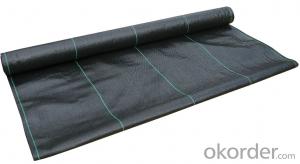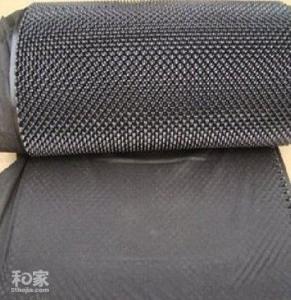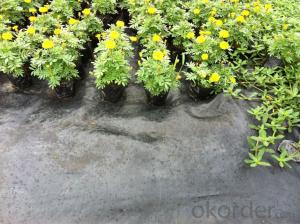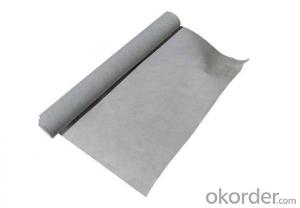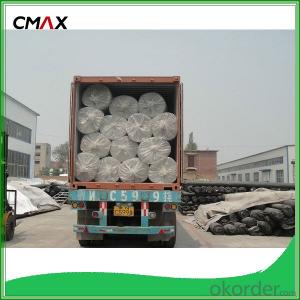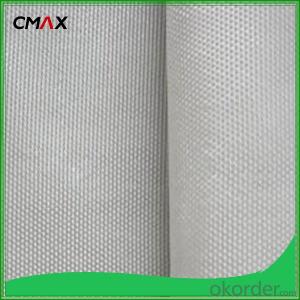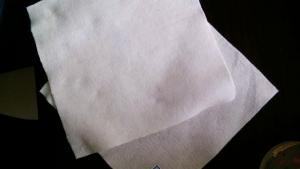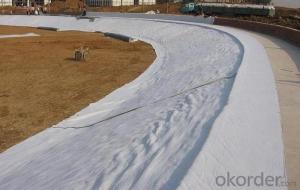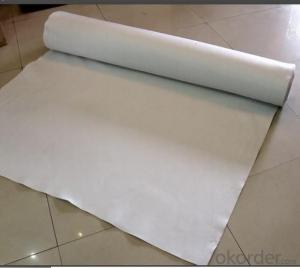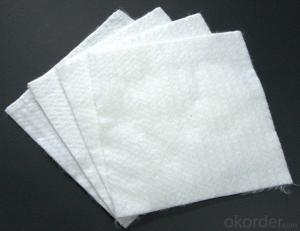Geotextil G20 Woven Polypropylene Geotextile with White Color
- Loading Port:
- Qingdao
- Payment Terms:
- TT OR LC
- Min Order Qty:
- 5000 m²
- Supply Capability:
- 1000000 m²/month
OKorder Service Pledge
OKorder Financial Service
You Might Also Like
PP Woven Geotextile Description:
Woven geotextile mainly uses polypropylene(PP),polyethylene(PE) as raw materials. After extruding.It has long term corrosion resistance in the soil and water with different PH;Due to its excellent microbiological degradation resistance. The material is light and soft, so it is convenient to transport and install.
PP Woven Geotextile Application :
Road Construction .
Embankment on soft soils .
Slope Reinforcement .
Reclamation and breakwater .
Earth/Rock dam and irrigation infrastructures .
Railway and airfield construction .
Sport and athletic field
Anti-weeds
PP Woven Geotextile Specification :
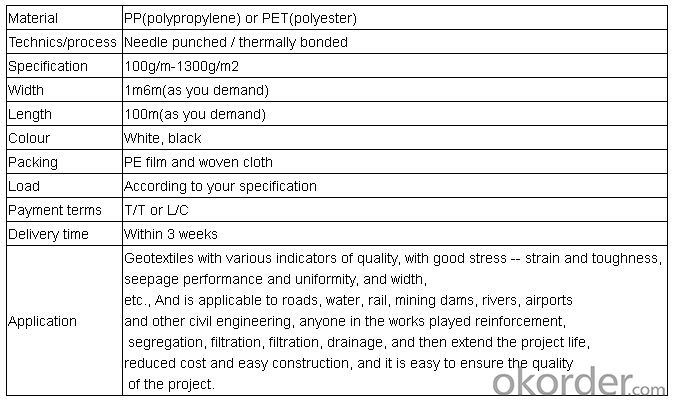
Applications:
Water conservancy:
1.) sea wall, river bank, lake bank project
2.) River bottom protection, diversion and irrigate work
3.) Reservoir anti-leakage and delete danger and reinforcement
4.) Fence mud and land
5.) Soft body drainage
6.) geotextile sand flushing bag, land flushing bag
7.) emergency flood fighting
Road works:
1.) soft base reinforcement
2.) side slope protection
3.) Anti-reflective layer of pavement seam structure
4.) drainage system
5.) green belt for insulation
Railway works:
1.) railway foundation bed reinforcement,
2.) embankment slope reinforcement and protection 3.) Waterproof and drainage layer for tunnel inner wall 4.) geotextile drainage blind ditch
Air port works:
1.) runway base reinforcement 2.) parking apron and road surface structure 3.) airfield and drainage system
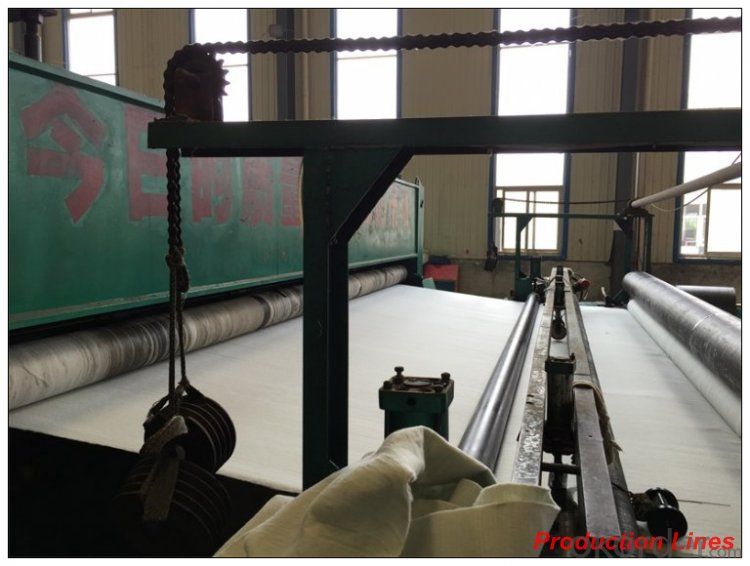
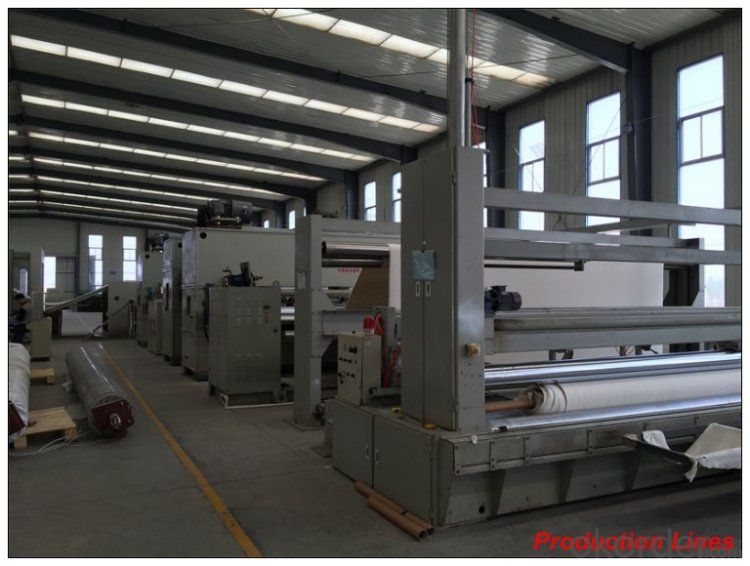
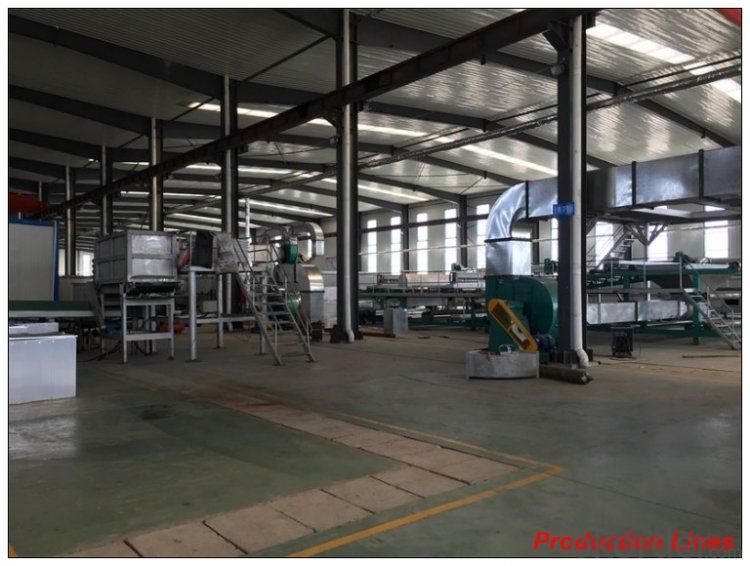
FAQ:
Q1: What is your minimum order quantity?
A:The minimum order quantity is 5000 ,but it is negotiable.
Q2:What is your payment terms?
A: T/T,Western Union,Paypal,L/C...
Q3:What is your delivery time?
A:Production time usually costs 2-20 days.
Waiting to cooperate with you!
- Q: What are the different design considerations for geotextile applications?
- Some of the different design considerations for geotextile applications include the type and strength of the geotextile material, its permeability and filtration characteristics, its durability and resistance to degradation, the required tensile strength and elongation properties, as well as its installation and maintenance requirements. Other factors to consider include the anticipated loadings and stresses on the geotextile, the expected lifespan of the application, and any specific project requirements or environmental considerations.
- Q: Are geotextiles suitable for use in road shoulder stabilization?
- Yes, geotextiles are suitable for use in road shoulder stabilization. Geotextiles provide effective erosion control and reinforcement, preventing soil movement and maintaining the stability of road shoulders. They also allow for proper drainage and filtration, reducing the risk of water damage and extending the lifespan of the road.
- Q: How do geotextiles affect visual aesthetics?
- Geotextiles can have both positive and negative effects on visual aesthetics. On one hand, they can enhance the visual appeal by providing a clean and uniform appearance, especially when used in landscaping or erosion control. On the other hand, geotextiles can sometimes be visible and disrupt the natural beauty of a landscape, particularly when used in areas where they are not well integrated or when they deteriorate over time. Therefore, the visual impact of geotextiles depends on their proper installation, maintenance, and suitability for the specific application.
- Q: Are geotextiles suitable for high-traffic areas?
- Yes, geotextiles can be suitable for high-traffic areas. Geotextiles are durable and can provide reinforcement to the underlying soil, reducing erosion and enhancing stability. They can effectively distribute the load of heavy traffic and help maintain the integrity of the ground surface. However, the selection of the appropriate geotextile type and specification must be based on the specific requirements and conditions of the high-traffic area.
- Q: How do geotextiles affect soil temperature?
- Geotextiles can have varying effects on soil temperature depending on their characteristics and application. They can act as a barrier, reducing heat transfer between the soil and the surrounding environment, leading to lower soil temperatures. However, they can also act as an insulator, trapping heat and raising soil temperatures. The specific impact on soil temperature will depend on factors such as the material composition, thickness, color, and placement of the geotextile.
- Q: Are geotextiles resistant to creep deformation?
- Yes, geotextiles are generally resistant to creep deformation. Geotextiles are designed to have high tensile strength and low creep properties, allowing them to withstand long-term loads and maintain their original shape and dimensions over time.
- Q: What are the environmental benefits of using geotextiles?
- Geotextiles offer several environmental benefits, such as erosion control by stabilizing soil and preventing sediment runoff, enhancing water filtration and drainage systems, reducing the need for chemical herbicides and pesticides, and promoting the growth of vegetation. Additionally, they can help in the restoration and protection of ecosystems, reduce construction waste by extending the lifespan of infrastructure, and minimize the use of non-renewable materials like aggregates.
- Q: What are the different geotextile permeability testing standards?
- Some of the different geotextile permeability testing standards include ASTM D4491, ISO 11058, and EN ISO 12958. These standards provide guidelines for conducting tests to determine the hydraulic conductivity and permeability characteristics of geotextile materials.
- Q: How do geotextiles help in erosion control?
- Geotextiles help in erosion control by acting as a barrier between the soil and water, preventing erosion by filtering and stabilizing the soil. They provide reinforcement and support to the soil, reducing the impact of water flow and preventing the loss of soil particles. Additionally, geotextiles promote vegetation growth by retaining moisture, enhancing root development, and protecting newly seeded areas from wind and water erosion.
- Q: How do geotextiles improve the performance of geopipes?
- Geotextiles improve the performance of geopipes by acting as a filter and separator between the soil and the pipe. They prevent the intrusion of fine particles into the pipe, which can clog it and reduce its flow capacity. Additionally, geotextiles enhance the stability of the soil around the pipe, preventing soil erosion and maintaining the overall integrity of the system.
Send your message to us
Geotextil G20 Woven Polypropylene Geotextile with White Color
- Loading Port:
- Qingdao
- Payment Terms:
- TT OR LC
- Min Order Qty:
- 5000 m²
- Supply Capability:
- 1000000 m²/month
OKorder Service Pledge
OKorder Financial Service
Similar products
Hot products
Hot Searches
Related keywords
